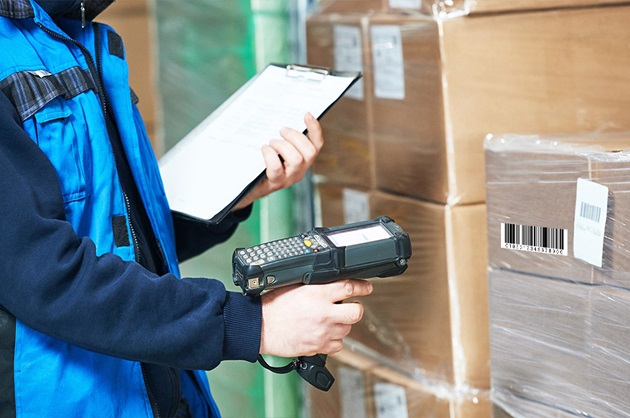Barcode Scanners: A Practical Guide to Boosting Efficiency and Accuracy
By Steven Harrisson, July 4, 2024
Businesses that sell and distribute products are often part of a hectic environment with numerous moving parts and a high demand for efficiency and accuracy. With so many moving parts, there is plenty of room for error and delays which can greatly impact the bottom line. You can easily decrease the likelihood of human error and increase efficiency by implementing modern technological solutions.
One such move would be optimising your POS system by adding accurate and efficient barcode readers. These devices are used to scan and read barcodes on items, and other data storage labels, making the inventory management process easier and more accurate.
Which Type of Barcode Scanner Is Best?

There are a variety of barcode scanners available on the market. The best type for your business will depend on several factors such as your industry, budget, and specific needs. If you have all of your requirements sorted out, you’ll be able to narrow down your choice.
Corded vs Cordless
The main difference between corded and cordless barcode readers is the presence of a physical cable. Corded models require a direct connection to a computer or POS terminal while cordless options use wireless technology, such as Bluetooth, to transmit data. They both have the same capabilities, but cordless versions offer more flexibility and mobility.
For instance, if you have a retail store with several checkout stations, cordless barcode scanners can easily move between them without the hassle of tangled cords. This also makes it easier to scan items that are too large or heavy to bring to a stationary setup, which can hinder productivity.
Handheld vs Wearable
Another factor to consider is whether you need a handheld or wearable barcode scanner. Handheld models are the most common and allow for easy scanning of items by holding the device in your hand. On the other hand, wearable options can be attached to a finger or wrist, freeing up both hands for tasks such as picking and packing.
Handheld models may be more suitable for industries where heavy lifting is not required, while wearable ones may be better for warehouse operations. You get the benefit of being able to scan without having to hold a device, which can minimise muscle strain and increase efficiency.
1D vs 2D vs QR Code
The exact technology used in a barcode reader determines the type of codes it can scan. The most common types are 1D and 2D barcodes, with QR codes being a popular subcategory of 2D codes.
1D barcodes consist of vertical lines and spaces that represent numbers or letters, while 2D barcodes use patterns and shapes to store information. The former is generally used for simple inventory tracking, while the latter can store more data such as product descriptions, prices and images.
QR codes have gained popularity due to their ability to be scanned by smartphones, which is why they’re making such an impact in marketing campaigns. They can hold more information than traditional barcodes, and can also link directly to websites for easy access.
RFID Readers and Writers
Next up, we have RFID (Radio Frequency Identification) readers and writers. These devices use radio waves to read and write data on tags or labels attached to objects. They can be used for inventory management, tracking products through the supply chain, and even in contactless payment systems.
One of the main advantages of using RFID technology is its ability to read multiple tags at once, making it much faster than barcode scanning. It also eliminates the need for line-of-sight scanning, which means you can retrieve information from tagged items without having to physically see them.
However, RFID technology can be more expensive compared to barcode readers and may not be suitable for all industries. Its use is also limited to certain materials, as some materials can interfere with the radio waves and affect the accuracy of the data.
Smartphone and IPod Compatible Devices
In a highly digitalised world, it’s no surprise that barcode readers have evolved to be compatible with smartphones and iPods. These devices can now use the built-in camera to scan barcodes, making it easier for consumers to access product information and make purchases on the go.
Additionally, some retailers have also started using Near Field Communication (NFC) technology, which allows smartphones and other devices to communicate with a barcode or RFID tag by simply being in close proximity. This has opened up new opportunities for mobile marketing and contactless payments.
Advantages of Using Barcode Scanners

These devices hold many advantages for businesses regardless of their size or industry. They’re affordable, easy to use and can be integrated with existing systems. They also provide real-time data, making it easier for businesses to track their inventory levels and monitor sales.
Barcode scanners are also more accurate compared to manual data entry, reducing the chances of human error. This not only saves time but can also prevent costly mistakes. Gone are the days of manually counting and recording inventory, which can be tedious and prone to errors.
Furthermore, these devices allow for faster checkout processes, reducing waiting times for customers and increasing overall efficiency. This is especially important in industries such as retail and healthcare, where time can be a crucial factor. You no longer have to manually enter product information or search through a database – simply scan the barcode and all the necessary data is retrieved instantly.